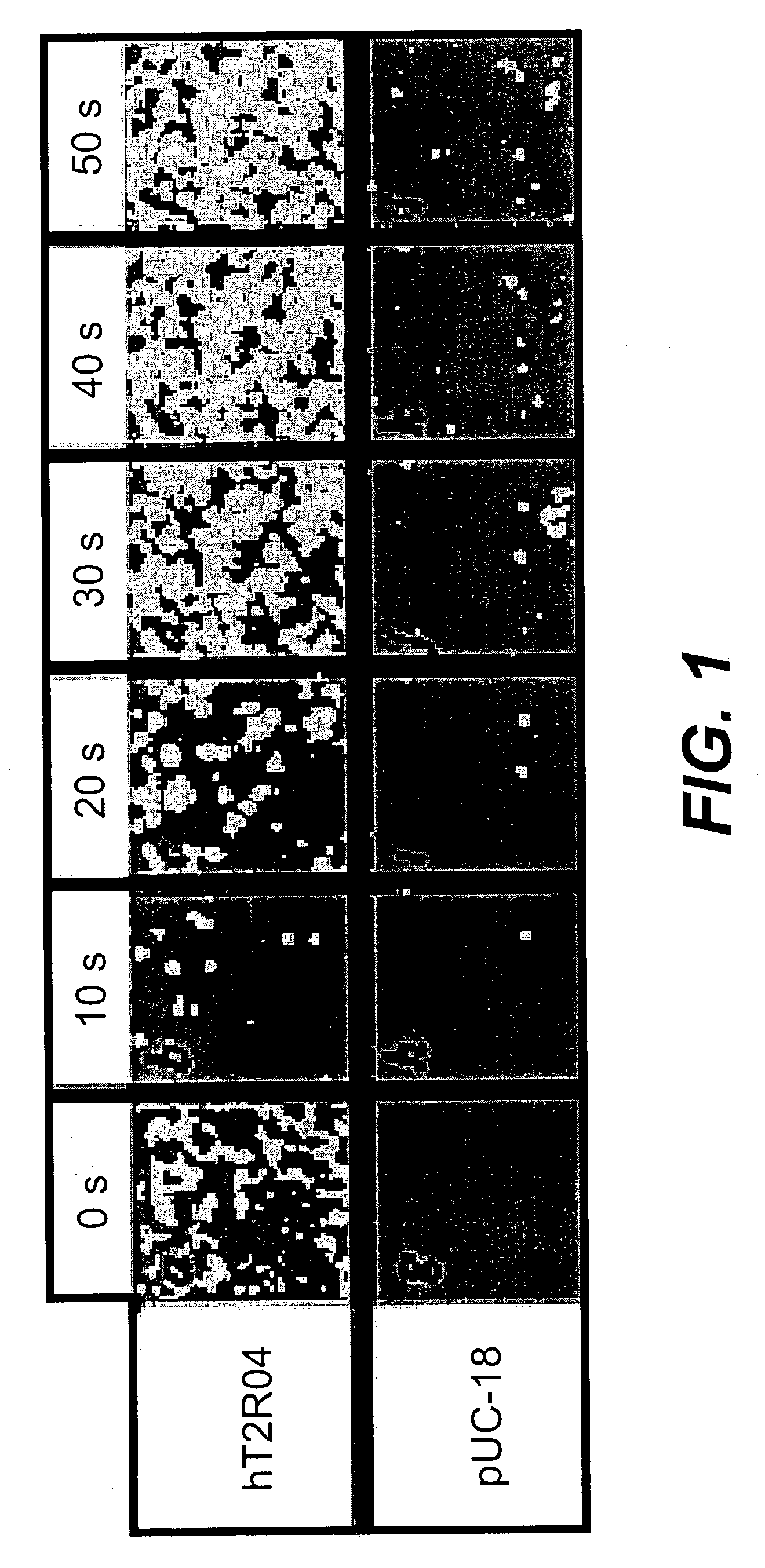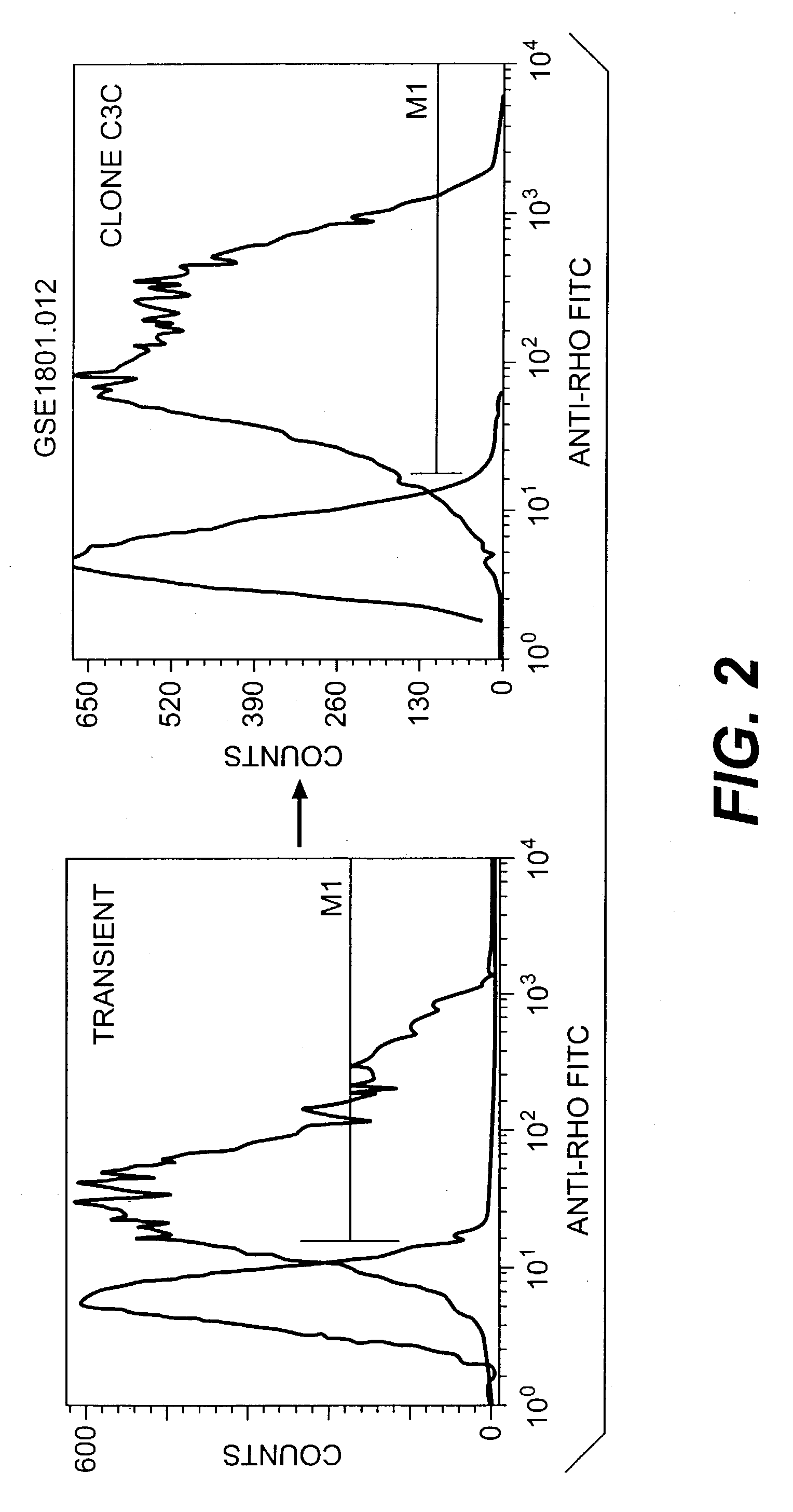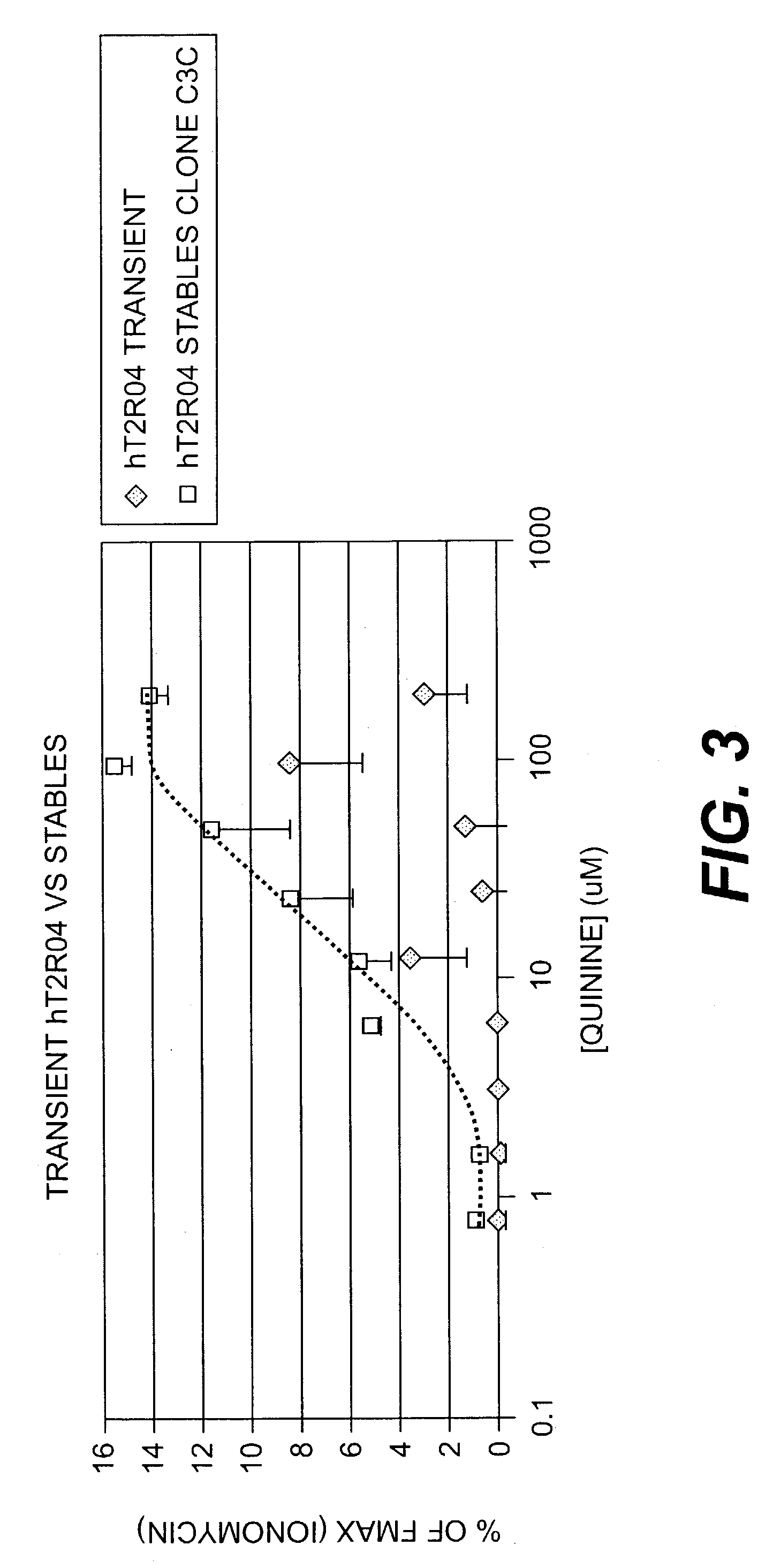Use of specific T2R taste receptors to identify compounds that block bitter taste
- Summary
- Abstract
- Description
- Claims
- Application Information
AI Technical Summary
Benefits of technology
Problems solved by technology
Method used
Image
Examples
example 1
[0178] In this example, we show that quinine, a bitter alkaloid, specifically activates hT2R4, a human bitter receptor having the DNA sequence contained in SEQ ID NO: 2 in this application.
[0179] Activation of hT2R4 by quinine is measured in a cell-based assay detecting changes in intracellular calcium concentration. In brief, human embryonic kidney cells stably expressing the large T-cell antigen and the promiscuous G protein G15 (HEK-G15) are transiently transfected with the hT2R4 plasmid either by Ca.sup.2+ phosphate or lipid-based systems. Transiently transfected cells are seeded into 24 well culture plates, and functional expression allowed to proceed for a total of 48 hours. The cells are then incubated with a fluorescent dye specific for calcium (Fluo-4 or Fura-2; Molecular Probes) that provides a fast, simple and reliable fluorescence-based method for detecting changes in calcium concentration inside the cell. Addition of quinine to cells elicits a signaling cascade leading ...
example 2
[0180] A HEK-G15 line stably expressing high levels of hT2R4 on its cell surface (HEK-G15-hT2R4) is also used in high throughput screening assays to find potent hT2R4 antagonists. We generated a stable HEK-G15-hT2R4 line that expresses 2-3 times more receptors at the cell surface than transiently transfected cells (see FIG. 2). In this platform, the cells are seeded into 96 well or 384 well culture plates 18-24 hours before the assay. The cells are then incubated with the fluorescent calcium sensitive dye (Molecular Devices) and are stimulated and read in a standard fluorescence intensity plate reader (FLIPR or VIPR). Using this approach we have been able to further characterize the quinine effect on hT2R4. We found that quinine activates hT2R4 in a typical dose-response relationship (see FIG. 3).
example 3
[0181] In this experiment, to monitor activation of T2R receptors we employed a GTP.gamma.S binding assay (FIG. 4). This assay is a classic assay to monitor the activity of GPCRs (Wessling-Resnick and Johnson, 1987). It is based on the fact that in the presence of an appropriate ligand, a GPCR is able to activate G protein. The resultant activated G protein exchanges bound GDP to GTP. If a nonhydrolysable analog of GTP, GTP.gamma.S is used the nucleotide remains tightly bound to G protein and can be separated from unbound nucleotide. The use of radioactively labeled [.gamma.-.sup.35S]GTP.gamma.S allows determination of the amount of bound GTP.gamma.S. The amount of bound GTP.gamma.S reflects the amount of activated G protein, which in turns reflects activation of the receptor. We used transducin as a G protein in GTP.gamma.S binding assay. Transducin is expressed in the visual system and is an ortholog of gustducin. Transducin was purified from bovine retinas (Stryer, Methods Enzymo...
PUM
| Property | Measurement | Unit |
|---|---|---|
| Concentration | aaaaa | aaaaa |
| Solubility (mass) | aaaaa | aaaaa |
| Fluorescence | aaaaa | aaaaa |
Abstract
Description
Claims
Application Information
 Login to View More
Login to View More - R&D
- Intellectual Property
- Life Sciences
- Materials
- Tech Scout
- Unparalleled Data Quality
- Higher Quality Content
- 60% Fewer Hallucinations
Browse by: Latest US Patents, China's latest patents, Technical Efficacy Thesaurus, Application Domain, Technology Topic, Popular Technical Reports.
© 2025 PatSnap. All rights reserved.Legal|Privacy policy|Modern Slavery Act Transparency Statement|Sitemap|About US| Contact US: help@patsnap.com



